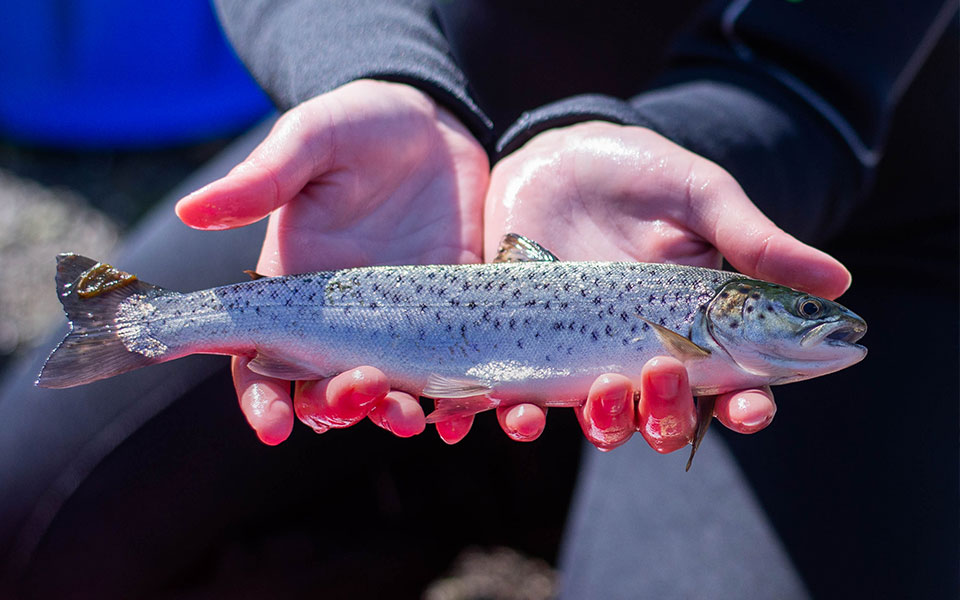
Brown trout (Salmo trutta)
Brown trout are native to Skye and Lochalsh and can be found in the majority of rivers in the area. However, similar to salmon records, trout populations have shown a substantial decline in numbers in recent decades. There are thought to be multiple factors contributing to this decline including overfishing, predation, the Scottish aquaculture industry and habitat loss.
While there is less legislation in place to conserve trout populations than has been instated for salmon populations, SLRT is currently strongly encouraging all anglers to practice catch and release techniques for trout in our rivers in order to safeguard our local fish for future generations.
Brown trout are well-known for their display of facultative, or partial migration. Migration tactics can range from an individual trout remaining in the same stretch of river its entire life while another individual migrates through the full extent of its natal river without entering salt water. Both of these individuals would be referred to as a freshwater-resident trout.
Other trout will migrate into the marine environment and are classified as anadromous individuals (spawn in freshwater but feed in the marine environment), or sea trout.
Until recently, not much was known about the varied migration patterns of brown trout or what drives different individuals to utilize different resident or anadromous life history strategies but research has shown that both environmental and genetic factors can play a role in determining the extent of a trout’s migration range, both in freshwater and saltwater habitats.
Similarly to Atlantic salmon, brown trout spawn in freshwater over the autumn months (October-November) by depositing eggs in gravel beds. Hen (female) fish disturb the gravel substrate to create a redd where they lay their eggs. Cock (male) fish remain close by doing very little to assist the female in creating the redd but will compete with other nearby males to fertilise the eggs as they are laid by the female.


The ova hatch early in the year (January-February) feed off their egg sacks but do not leave the safety of their gravel redd until the spring when they emerge as fry and begin to feed independently. Juveniles can remain in freshwater for anywhere between 1-8 years before undergoing a challenging physiological transformation called smolting that allows them to migrate from freshwater into salt water. Smolts develop a silvery colour that distinguishes them from younger trout that are darker. The smolting process and resulting “smolt run” (groups of smolts moving downstream from their juvenile habitat to brackish water) occurs primarily in April-May in Skye and Lochalsh, however, the smolting and migration window for trout is often longer than it is for salmon and some smolts have been shown to enter the marine environment through the summer and autumn months.
Once in the marine environment, some trout will remain close to the shore while others will travel long distances in search of other feeding grounds. Research has shown that Scottish trout migrating to sea tend to stay in coastal areas near their natal river. Some trout will regularly move between fresh and salt water without spawning, and this behaviour has been linked to parasitic sea lice infestations which will vary depending on the individual. The amount of time trout remain in salt water before returning to freshwater ranges from a few months (finnock) to several years (multi sea winter fish).
Trout are often mistaken as salmon because they look similar, however they can be distinguished by a few key features. For example, trout are considered to be stouter than salmon with a thicker tail “wrist” and a shallower tail fork, their pectoral fins are smaller, and there are often marks below the lateral line.


